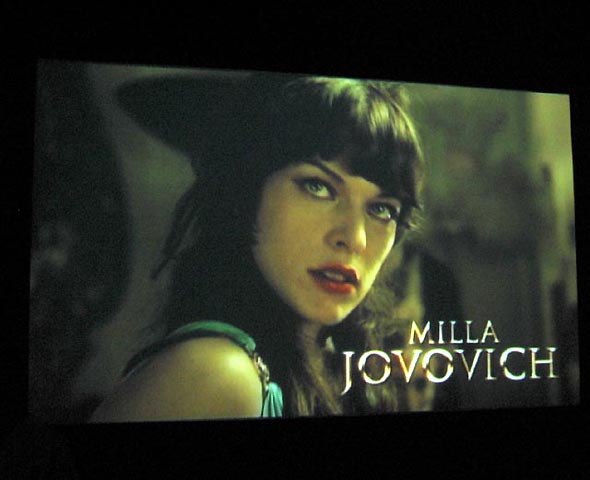Biennial Bonanza

I finally heaved myself over to the Whitney Biennial, and was left unimpressed, except, of course, for some films. First, there's a very funny fake trailer for a remake of Caligula by Francesco Vezzoli. It has the gravelly-voiced narrator and is replete with stars appended with banal adjectives - the "charming" Benicio Del Toro, the "amazing" Helen Mirren, the "ravishing" Milla Jovovich etc. One actress who I didn't know was starring in her "first lesbian sequence", and Gore Vidal was on hand to offer the hook at the end. The description tried to weight the thing with political significance, but really it's well done nonsense with scads of nudity.
Then Kenneth Anger had his Mouse Heaven which I'd seen at MoMA some time back and
 appreciated more this time around. Mostly because it's a ridiculously happy piece amidst the layers of self-conscious depression the made up the rest of the museum. It's a stop-motion animation using the toys and paraphenalia of a Mickey Mouse collector. Anger cues these cute and bizarre nostalgia pieces to old pop tunes, mostly love songs, if I recall collectly, all of them fabulous. The point at which Mickey starts lip-synching is wondrous.
appreciated more this time around. Mostly because it's a ridiculously happy piece amidst the layers of self-conscious depression the made up the rest of the museum. It's a stop-motion animation using the toys and paraphenalia of a Mickey Mouse collector. Anger cues these cute and bizarre nostalgia pieces to old pop tunes, mostly love songs, if I recall collectly, all of them fabulous. The point at which Mickey starts lip-synching is wondrous.The peak of the exhibition though was Pierre Huyghe's A Journey That Wasn't, a travelogue/fairy tale/performance of immense beauty and mystery. Huyghe (whose This Is Not a Time For Dreaming I recently enjoyed), went on a trip to Antarctica, on a mission to discover a creature and an island he cryptically states has never been discovered before. The film cuts between ravishing footage of Antarctica with a recreation of the trip he mounted in Central Park last October, complete with fake mountains and the shadow of an animatronic penguin. So, there's layers to sift through, the constructed narrative of the undiscovered country, the "real" images of Antarctica itself, and the reconstruction of the constructed narrative in Central Park, which was accompanied by a full orchestra. My exposition is complicated, but the film is quite simple, the only dialogue is in a voice-over by Huyghe stating the mission. The rest is image - most of it beautiful, rivaling the the sublime landscape work of Peter Hutton. They are otherworldly images - of an undulating snowy expanse, a glowing orb marking their home base, the abstract ice shapes carved by the wind. When he cuts to the Central Park skyline - it is jarring - its familiarity whisking us back to the everyday world. But. Through a battery of lights and the help of misty weather, it soon turns otherworldly itself, the atonal score rumbling around the steel mountains. Shots of the crowd are cut in - their rapt faces taking in a more modern wonder than the wonders of the Antarctic footage. He doesn't discriminate between natural and man-made wonders, just compares their qualities, reveling in his role as puppeteer. The revelation of the creature at the end, in Central Park, shadowy and small, is the dramatic pay-off, challenging to see whether we can suspend disbelief among all the disbelief he built in, whether the power of myth and storytelling can overcome layers of self-reflexivity. Here it can, for a few brief moments.



0 Comments:
Post a Comment
<< Home